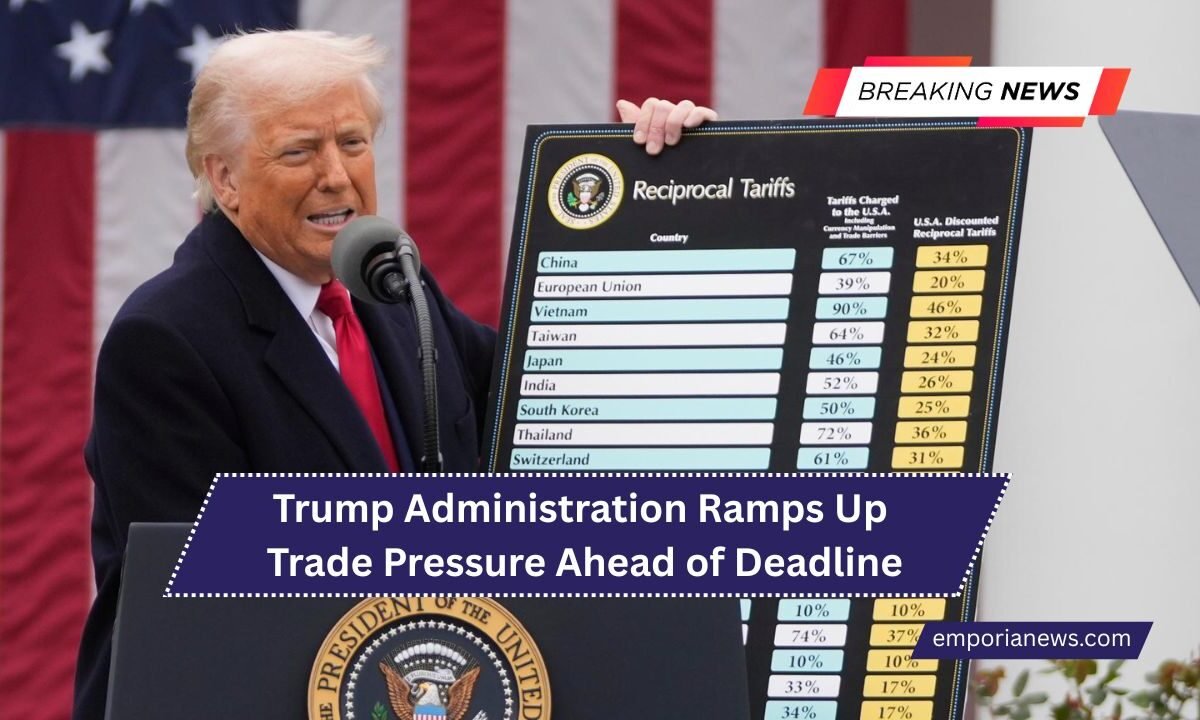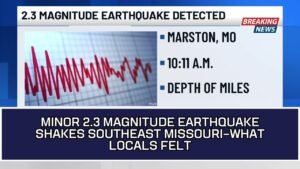The Trump administration is intensifying efforts to finalize trade agreements by a Wednesday deadline, preparing to send official notices on Monday that could trigger higher tariffs starting August 1.
These notices are part of a broader strategy to compel trading partners to agree to new deals swiftly.
However, key details—such as which countries will receive these warnings and whether an extension might be granted—remain uncertain.
While President Donald Trump has left the door open to extending the negotiation period, he continues to apply maximum pressure on foreign governments.
White House officials emphasized the administration’s firm stance but suggested flexibility for those acting in good faith.
U.S. Officials Signal Potential Flexibility
Kevin Hassett, Director of the White House National Economic Council, explained on CBS’ Face the Nation that President Trump alone would determine when talks had failed.
“The U.S. is always willing to talk, but there are deadlines,” he said, acknowledging that some negotiations might continue beyond the cutoff.
Similarly, Stephen Miran, Chair of the White House Council of Economic Advisers, indicated that nations demonstrating a cooperative approach could see the timeline extended.
Tariffs Announced in April Stirred Global Concern
President Trump first introduced steep tariff increases on April 2, sparking fears of global trade disruption.
Following market turmoil, the White House postponed most tariff hikes for 90 days, allowing negotiations to proceed through July 9.
To date, only the United Kingdom and Vietnam have reached agreements with the U.S. during this window. The tariffs in question include:
- A 10% base tariff on all imports
- 50% duties on steel and aluminum
- 25% tariffs on automobiles
These measures target countries with substantial trade surpluses with the United States, reflecting what Trump described as an economic emergency.
Letters Threatening New Tariffs Expected Monday
On Friday, Trump suggested letters could be sent to several countries as early as Saturday, outlining potential tariffs if agreements aren’t finalized.
By Sunday, he confirmed that these letters would begin going out Monday, possibly to 12 to 15 countries.
“We’ve made some deals,” Trump told reporters. “So we’ll have a mix—some countries will get letters, others have already reached agreements.”
However, Trump and his team have not identified which nations will receive the notices.
Treasury Secretary Scott Bessent declined to treat August 1 as a hard deadline, saying, “We’ll see,” and avoided detailing any interim steps leading up to Wednesday.
Canada Not Among Countries to Receive Letters
One country confirmed to be exempt from the letter campaign is Canada. U.S. Ambassador Pete Hoekstra revealed that talks with Canada had resumed and were progressing positively.
“Canada is one of our most important trade partners,” Hoekstra said in a CTV News interview. “We’ll have a properly articulated deal.” However, he did not provide a timeline and noted that some tariffs might still apply, even with an agreement.
Canadian Prime Minister Mark Carney has set July 21 as his target for a finalized trade deal and has threatened retaliatory measures if the deadline is not met.
Trump Targets BRICS and Highlights Vietnam Deal
Later Sunday, President Trump took aim at the BRICS nations, which criticized his trade stance at a recent summit in Brazil.
Trump responded by pledging an additional 10% tariff on any country supporting what he labeled “Anti-American policies” promoted by BRICS.
Meanwhile, a newly announced deal with Vietnam allows duty-free access for U.S. goods, while Vietnamese exports will face a 20% tariff.
This marks a reduction from the 46% rate Trump originally proposed in April under his “reciprocal tariffs” policy aimed at addressing trade imbalances.
Future of EU and India Deals Remains Unclear
Asked about upcoming negotiations with the European Union and India, Trump remarked that sending tariff letters might be a simpler and more effective strategy given the number of countries involved.
He explained, “Sometimes it’s easier to say, ‘This is the deficit or surplus, and this is what you’ll need to pay if you want access to the U.S. market.’”
As the July 9 negotiation deadline approaches, the Trump administration is ramping up pressure through the threat of significant tariff increases starting August 1.
While some countries have reached agreements, many remain in limbo as the U.S. signals both flexibility and firmness in its pursuit of favorable trade terms.
Whether these efforts will spark new deals or broader trade tensions remains to be seen.




